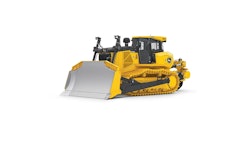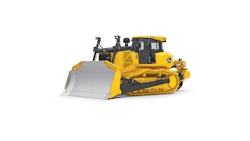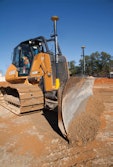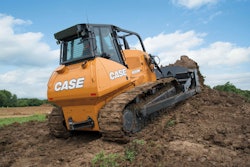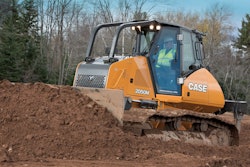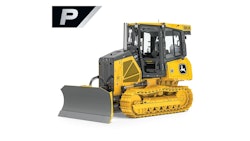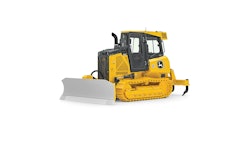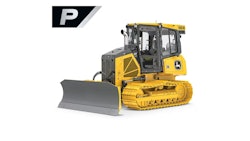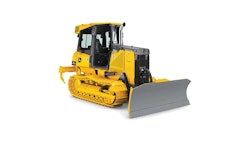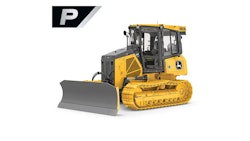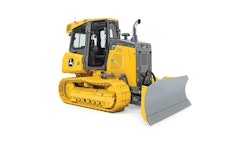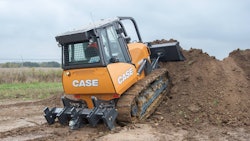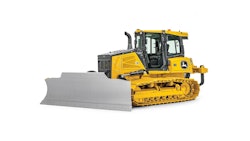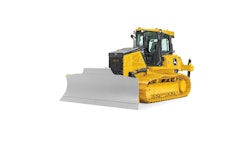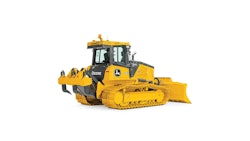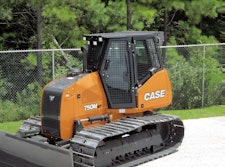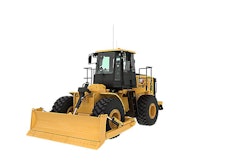Dozers
A dozer, short for bulldozer, is a type of heavy equipment used in construction, mining, and other earth-moving projects. It typically has a large, flat blade at the front to push soil, sand, rocks, and other materials around a construction site or mining area. Bulldozers come in different sizes and designs, but most have tracks instead of wheels for better traction and stability on uneven terrain. They also have a powerful engine and hydraulic system to operate efficiently in harsh working conditions. Besides their primary use in moving earth, bulldozers can also be equipped with different attachments, such as rippers, winches, and blades, to perform tasks like digging, grading, leveling, and compacting soil.
A dozer, short for bulldozer, is a type of heavy equipment used in construction, mining, and other earth-moving projects. It typically has a large, flat blade at the front to push soil, sand, rocks, and other materials around a construction site or mining area. Bulldozers come in different sizes and designs, but most have tracks instead of wheels for better traction and stability on uneven terrain. They also have a powerful engine and hydraulic system to operate efficiently in harsh working conditions. Besides their primary use in moving earth, bulldozers can also be equipped with different attachments, such as rippers, winches, and blades, to perform tasks like digging, grading, leveling, and compacting soil.
Choosing between a crawler dozer and a wheel dozer depends on your specific needs and the type of work you plan to do. Here are some factors to consider when deciding between the two:
1- Terrain:
Crawler dozers are better suited for rough or uneven terrain, such as rocky surfaces or steep inclines, as their tracks provide better traction and stability. On the other hand, wheel dozers are better suited for smooth or flat terrain, such as roads or construction sites, as their wheels provide better maneuverability and speed.
2- Surface damage:
Crawler dozers tend to cause less damage to the ground surface than wheel dozers, as their tracks distribute the machine's weight more evenly. It makes them better for sensitive areas like agricultural land or wetlands.
3- Mobility:
Wheel dozers are faster and more maneuverable than crawler dozers, making them a better choice for tasks that require frequent movement around the work site, such as grading or site preparation.
4- Cost:
Crawler dozers are typically more expensive than wheel dozers due to their more complex track system and heavier weight. Ultimately, the choice between a crawler dozer and a wheel dozer will depend on your specific needs and the type of work you plan to do. It's important to consider all the factors and consult with a qualified equipment dealer before purchasing.
There are several reasons why you might consider buying a dozer:
1- Earthmoving and grading:
Dozers are primarily used for earthmoving and grading tasks. They are highly effective at pushing, leveling, and compacting soil, sand, gravel, and other materials, making them essential tools for construction projects, mining operations, and other industries.
2- Versatility:
Dozers can be equipped with various attachments, such as rippers, blades, and winches, making them versatile machines that can be used for various tasks. For example, a dozer with a ripper attachment can break up hard ground or rock, while a dozer with a winch can be used for heavy-duty hauling and towing.
3- Efficiency:
Dozers are designed to operate efficiently and can handle large volumes of material in a short amount of time. It can help to increase productivity and reduce labor costs on construction sites, mining operations, and other projects.
4- Durability:
Dozers are built to withstand harsh working conditions and are designed to operate reliably in harsh environments. It means they require less maintenance than other types of heavy equipment and can provide many years of reliable service. Suppose you are involved in construction, mining, or other earthmoving projects. In that case, a dozer can be an essential tool that can help you complete your work quickly, efficiently, and cost-effectively.
Renting a dozer can be a smart choice for several reasons:
1- Cost savings:
Renting a dozer can be more cost-effective than buying one, especially if you only need it temporarily. Renting eliminates the upfront cost of purchasing a new dozer and the ongoing costs of ownership, such as maintenance, repairs, and storage.
2- Flexibility:
Renting a dozer allows you to choose the suitable machine for the job without committing to a long-term purchase. You can rent a dozer with the specific features and attachments you need for your project and return it when you no longer need it.
3- Access to the latest technology:
Renting a dozer gives you access to the latest technology and features without investing in new equipment. Rental companies typically update their fleets regularly, so you can be sure you use the most up-to-date equipment.
4- Reduced downtime:
Renting a dozer can help to reduce downtime on your project, as rental companies typically provide regular maintenance and repair services to keep their equipment running smoothly. If a rental dozer breaks down, the rental company will usually provide a replacement machine quickly, minimizing any disruption to your work.
LGP stands for "Low Ground Pressure." An LGP dozer is a bulldozer designed to operate with low ground pressure, especially in soft or marshy conditions. LGP dozers have wider tracks and a longer track length than standard bulldozers, which help to distribute the machine's weight more evenly over a larger surface area. It reduces the pressure exerted by the dozer on the ground, minimizing soil compaction and reducing the risk of sinking into soft or muddy terrain. LGP dozers are commonly used in wetlands, swampy areas, and other sensitive environments where minimizing ground disturbance is a priority. They are also used in forestry and other industries where protecting the soil and ground cover is essential. In addition to their wider tracks, LGP dozers may have other features that improve their performance in low ground pressure conditions, such as larger blade sizes, longer wheelbases, and increased ground clearance.
Deciding whether to buy a dozer or a motor grader depends on the specific needs of your project. Here are some factors to consider when making your decision:
1- Earthmoving and grading:
Dozers and motor graders are designed for earthmoving and grading tasks but have different strengths. Dozers are better suited for heavy-duty pushing and moving large volumes of material, while motor graders are better suited for precision grading and shaping of surfaces.
2- Terrain:
Dozers are better suited for rough or uneven terrain, such as rocky surfaces or steep inclines, while motor graders are better suited for smooth or flat terrain, such as roads or construction sites.
3- Versatility:
Dozers can be equipped with various attachments, making them versatile machines that can be used for a wide range of tasks. Motor graders can also be equipped with attachments, but their primary function is grading and shaping surfaces.
4- Cost:
Dozers are typically more expensive than motor graders due to their weight and more complex track system. Motor graders are generally more affordable, making them a good option for small to medium-sized projects. Ultimately, choosing between a dozer and a motor grader will depend on your specific needs and the work you plan to do. It's important to consider all the factors and consult with a qualified equipment dealer before purchasing.
Skid steers and compact track loaders are versatile machines well-suited to various jobs. Here are some examples of jobs that are better served by a skid steer or compact track loader:
1- Landscaping:
Skid steers and compact track loaders are ideal for landscaping tasks such as grading, soil preparation, and planting. Their compact size and maneuverability make them well-suited for working in tight spaces, and they can be equipped with various attachments such as tillers, box blades, and trenchers.
2- Construction
Skid steers and compact track loaders are commonly used in construction projects for demolition, site preparation, and material handling. They can be equipped with attachments such as buckets, grapples, and hammers, making them versatile machines that can handle various tasks.
3- Agriculture:
Skid steers and compact track loaders are well-suited for agriculture tasks such as feeding livestock, cleaning barns, and moving hay bales. They can be equipped with attachments such as bale spears, pallet forks, and manure forks.
4- Snow removal:
Skid steers and compact track loaders can be equipped with snow removal attachments such as snow blades, blowers, and pushers. Their maneuverability and compact size make them well-suited for clearing snow from sidewalks, parking lots, and other tight spaces. Skid steers and compact track loaders are versatile machines that can be used for various jobs. Their compact size, maneuverability, and ability to accept a variety of attachments make them an ideal choice for small to medium-sized projects in various industries.
An electric drive dozer is a bulldozer powered by an electric motor instead of an internal combustion engine. The electric motor is powered by a battery or a generator that converts fuel into electricity. The electric drive system offers several advantages over traditional diesel-powered bulldozers. For one, electric drive dozers produce zero emissions, making them much cleaner and more environmentally friendly than their diesel counterparts. Additionally, electric drive dozers are often quieter and smoother, making them more comfortable for operators to use for extended periods. The electric drive system also allows precise control over the dozer's speed and direction, improving efficiency and productivity. The electric motor directly provides torque to the drive train, eliminating the need for a transmission and improving overall efficiency. Electric drive dozers are becoming increasingly popular in the construction and mining industries as companies look for ways to reduce their environmental impact and improve their operations.
A hydrostatic drive dozer is a type of bulldozer that uses a hydrostatic transmission system to transfer power from the engine to the tracks. In a hydrostatic transmission, the engine drives a hydraulic pump, which then pressurizes hydraulic fluid that drives hydraulic motors, which turn the tracks. This system allows for infinitely variable speed control and makes it easier to maneuver the dozer. One advantage of a hydrostatic drive system is its excellent control and responsiveness, allowing operators to make precise movements and adjustments. The system also allows easy control of the dozer's speed, acceleration, and deceleration. It can make the dozer more efficient and productive, particularly in tight spaces or when performing tasks that require careful precision. Another advantage of a hydrostatic drive system is that it can be more reliable and durable than traditional mechanical transmissions. Because there are fewer moving parts, the transmission system has less wear and tear, which can reduce maintenance costs and downtime.
Load-sensing hydraulics is a type of hydraulic system that provides precise and efficient control of hydraulic functions by adjusting the flow and pressure of hydraulic fluid to match the needs of the load being lifted or moved. This system is commonly used in heavy machinery, such as excavators, loaders, and cranes. In a load-sensing hydraulic system, the pressure and flow of hydraulic fluid are regulated by a variable displacement pump that adjusts the amount of fluid sent to the system based on the load being lifted or moved. It allows the system to use only the needed hydraulic power, reducing energy waste and improving overall efficiency. The load-sensing hydraulic system also typically includes a pressure-compensated flow control valve that adjusts the fluid flow to each function based on the load requirements of that function. It ensures that each function receives the appropriate amount of hydraulic power, even if other functions are used simultaneously. Load-sensing hydraulics can provide several advantages over traditional hydraulic systems, including improved efficiency, reduced energy waste, and more precise control over hydraulic functions. These benefits make load-sensing hydraulics a popular choice for heavy machinery and other applications that require precise and efficient hydraulic control.
Yes, you should care about ECO mode if you want to reduce your environmental impact, save money on fuel, and potentially extend the lifespan of your equipment. ECO mode is available on many machinery and vehicles, including cars, trucks, construction equipment, etc. When ECO mode is engaged, the equipment is optimized for fuel efficiency, reducing energy consumption and emissions. It can result in significant cost savings over time and a reduction in your carbon footprint. In addition to the environmental and financial benefits, using ECO mode can also help to reduce wear and tear on your equipment. When the equipment operates in ECO mode, it typically uses less power and runs at lower RPMs, which can result in less strain on the engine and other components. It can lead to reduced maintenance costs and a longer lifespan for your equipment. However, it is essential to note that ECO mode may not be suitable for all applications. In some situations, you may need to prioritize power and performance over fuel efficiency, in which case switching out of ECO mode may be necessary. Following manufacturer guidelines and recommendations when using the ECO mode ensures you operate your equipment safely and efficiently.
There are several types of dozers, but they generally fall into three size classes: small, medium, and large.
1- Small dozers:
Small dozers typically weigh between 3 and 5 tons and are designed for light-duty landscaping, construction, and maintenance. They are often used in areas with limited space, such as residential areas, or for grading small lots.
2- Medium dozers:
Medium dozers are larger and more powerful than small dozers, typically weighing between 10 and 20 tons. They are often used for heavier construction and earthmoving applications such as road building, land clearing, and mining operations.
3- Large dozers:
Large dozers are the most significant and potent type of dozer, typically weighing over 20 tons. They are used for the most demanding applications, such as large-scale mining, quarrying, and major earthmoving projects. They are equipped with large blades and powerful engines capable of moving massive amounts of material quickly and efficiently. In addition to the size classes, several types of dozers are based on their blade configuration and other features. These include:
1- Straight blade dozers:
These dozers have a straight blade used ofr grading and pushing materials.
2- Angle blade dozers:
These dozers have a blade that can be angled to one side, making them useful for tasks such as pushing materials to the side or clearing snow.
3- U-blade dozers:
These dozers have a blade shaped like a "U," allowing them to carry larger loads and move more material simultaneously.
4- Coal or Cushion dozers:
These dozers are designed specifically for mining coal and other soft materials and are equipped with special blades that help minimize damage to the moving material.
5- Low Ground Pressure (LGP) dozers:
These dozers have wider tracks and a lower ground pressure, which allows them to operate more effectively on soft or unstable terrain. Overall, the dozer best for a particular job will depend on a range of factors, including the size and scope of the project, the terrain, and the materials being moved.
2D and 3D grade control are two types of technology used in heavy equipment such as dozers and excavators to achieve accurate and precise grading. 2D grade control is a primary system that uses a laser or GPS to control the height of the blade or bucket in two dimensions - horizontal and vertical. The system typically involves setting up a laser or GPS base station that sends a signal to a receiver mounted on the dozer or excavator, which adjusts the height of the blade or bucket to maintain a consistent grade. 2D grade control is helpful for simple grading tasks such as cutting slopes or excavating trenches and is generally less expensive and easier to set up than 3D grade control. 3D grade control is a more advanced system that uses multiple sensors to control the blade or bucket's height, slope, and angle in three dimensions - horizontal, vertical, and slope. The system typically involves installing sensors on the blade or bucket and the dozer or excavator, which work together to provide real-time feedback on the position and orientation of the blade or bucket. 3D grade control is helpful for more complex grading tasks such as creating roadways, building foundations, and excavation work, and it is generally more expensive and more difficult to set up than 2D grade control. In summary, the main difference between 2D and 3D grade control is the level of precision and accuracy they provide. While both systems are designed to help achieve accurate and precise grading, 3D grade control is more advanced and provides more detailed information about the position and orientation of the blade or bucket, making it better suited for complex grading tasks.
Different blades are available for dozers, each designed for specific grading and earthmoving tasks. Some common types of dozer blades include:
1- Straight blade:
The straight blade is the most basic and commonly used blade on a dozer. It is a simple, flat blade for pushing and leveling soil, rock, and other materials.
2- Angle blade:
An angle blade can be angled to one side or the other, allowing the dozer to push material to the side or clear snow. This blade type is often used in road building and snow removal applications.
3- Semi-U blade:
The semi-U blade has a slight curve that allows it to hold more material and distribute it more evenly. It is often used for grading work and earthmoving applications.
4- U blade:
The U blade has a deep curve that allows it to hold a more prominent material, making it ideal for large earthmoving projects. It is commonly used in mining and quarrying applications.
5- Coal blade:
A coal blade is a specialized blade designed specifically for moving coal and other soft materials. It has a curved shape that helps to minimize damage to the material being moved.
6- Blade with ripper attachment:
Some dozer blades have a ripper attachment, a claw-like device for breaking up hard ground and rocks. The ripper can be lowered to the ground and used to tear up the soil, making it easier for the dozer blade to move the material. The type of dozer blade best for a particular job will depend on various factors, including the material being moved, the terrain, and the desired finish.
